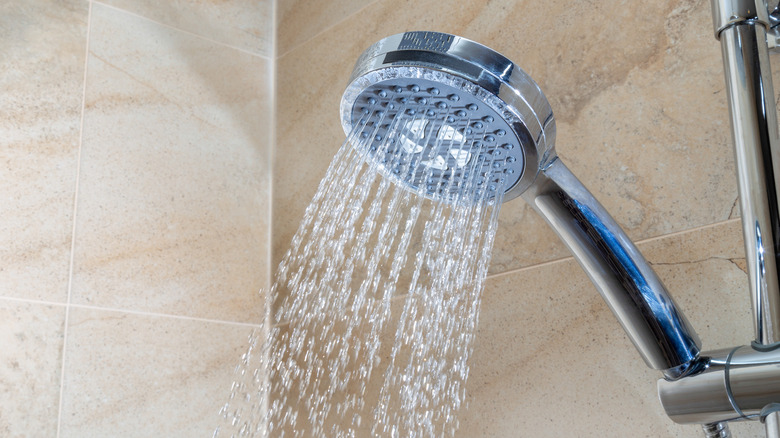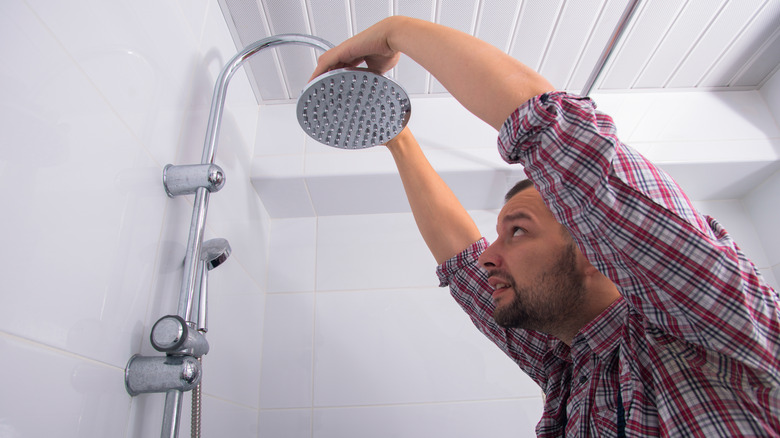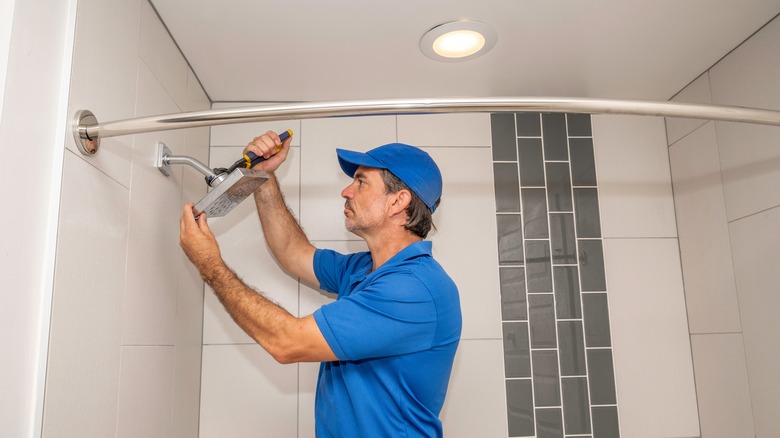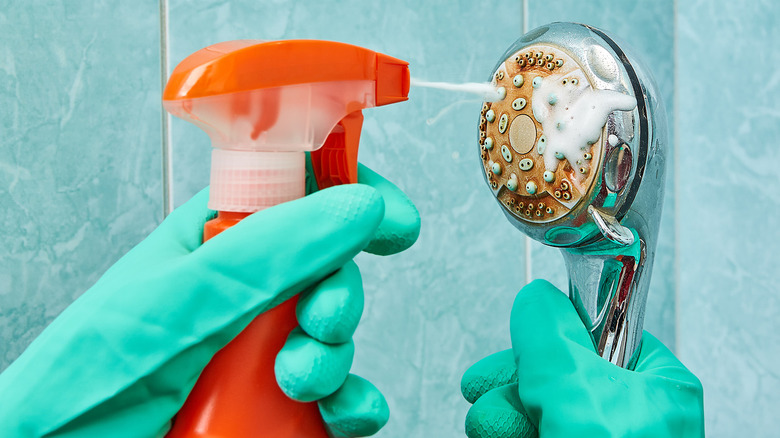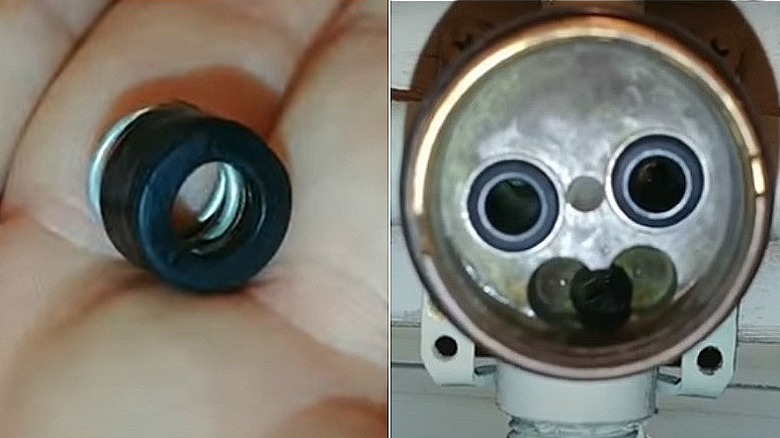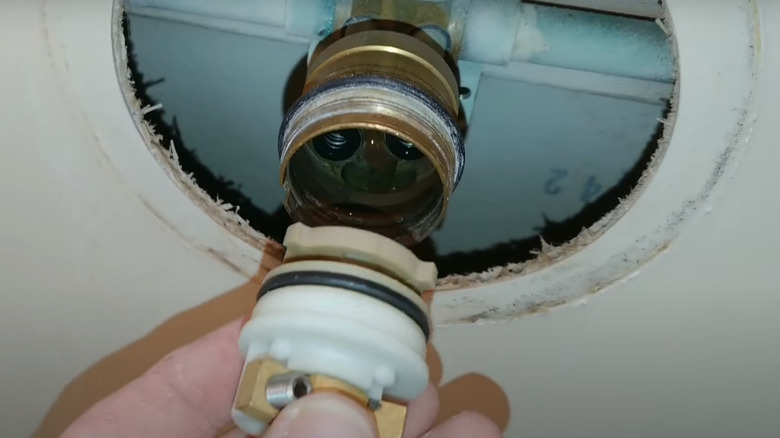How To Fix A Leaky Showerhead All On Your Own
A dripping showerhead is more than a nuisance for any home. It might disturb your beauty sleep every night but the compounding effect of water loss through the leak is even worse. According to the United States Environmental Protection Agency, a slow leak of about 10 drips per minute can cause a cumulative water loss of about 500 gallons annually. Well, if you pay for residential water, 500 gallons of water loss might mean a significant amount of money taken out of your pocket every year. Learning to fix showerhead leaks is an important skill set that could save you a lot of money down the line.
However, before thinking about fixing your leaky showerhead, the first order of business is to first get to the root of the problem. Remember, not all leaks are the same, and the approach to fixing the problem will depend on the specific type of leak. Fortunately, fixing a leaky showerhead is something you can do right at home without necessarily calling in a plumber. So what does the process of fixing a leaky showerhead look like for a regular homeowner? Tag along to find out more!
1. Diagnose the problem
Again, the type of solution for your particular leaky showerhead ultimately comes down to the specific type of leak. Once you know the problem, you can then go ahead and implement the corresponding repair for the problem. When it comes to a faulty showerhead, there are two common issues: 1) sediment buildup or 2) a showerhead that drips, or leaks, water after you shut it off.
Sediment buildup in the showerhead nozzle often manifests in the form of a weak water spray, or it can sometimes cause a leak from the fixture's joints. When there is sediment buildup, water often finds alternative passages; for instance, through the baseplate or the handle joint (via Len Tthe Plumber). As for a showerhead that leaks water after the tap is closed, that's a different story and may require a bit more investigative work. Typically, though, this type of leak happens because of worn-out rubber washers, also referred to as O-rings.
As said, these are two of the most common problems for a leaky showerhead. So, after diagnosing and isolating your specific showerhead issue, it's time to take out and assemble the tools you'll need to get down to the real task of repair.
2. Remove the showerhead
Before trying to remove the showerhead, remember to turn off the water supply just to make sure water doesn't drip off the showerhead. Almost every showerhead is sealed tight on the showerhead arm through a clockwise motion, explains Waterpik. So, removing the showerhead off the arm is as simple as turning the head counterclockwise. However, if you're dealing with a showerhead that has never been replaced for several years, chances are you might need some help getting the head to turn.
If you need more assistance, use a damp cloth to hold the showerhead for added grip. Usually, the showerhead should easily open; however, in the rare circumstance that it still doesn't budge, you will need to use a tool to force it open — either adjustable pliers or a wrench. Use a rag to cover and protect the fitting before going in with the adjustable pliers (or wrench) and force the showerhead open.
Usually, a stuck showerhead often indicates an old and worn-out appliance that needs replacement rather than a fix. While using heavy tools to open the showerhead, exercise caution not to bend or break the showerhead arm. For older showerhead fixtures, it might be safer to remove the whole arm and the showerhead.
3. Clean and inspect the showerhead
If you've noticed that the water pressure from the showerhead has reduced significantly, then the showerhead might be clogged with mineral deposits or grime. Contrary to popular belief, showerheads can get clogged regardless of the type of water, whether soft or hard. Usually, after opening and cleaning the showerhead, the water pressure will return back to normal.
But what is the best way to clean a showerhead? Through the fixture's opening, look inside the showerhead for anything out of the ordinary. There should be a screen and other parts, and you should know if anything is out of place. If there are sediments or any blockages, then you will need to clean the showerhead.
Prepare a cleaning agent using 3 parts vinegar and 1 part baking soda. Vinegar is a popular home cleaning agent that's acidic and strong enough to dissolve mineral deposits from fixtures, including a showerhead, per Wirecutter. You'll need to submerge the showerhead in the mixture and allow it to settle for one or two hours.
After soaking, use a scouring pad to remove any remaining mineral deposits. You can dip the showerhead in the cleaning agent for another hour if the mineral deposits are still stuck. Finally clean with cold water before reassembling the head back.
4. Replace the O-rings
Leaks that occur long after shutting off the water are often caused by worn-out rubber seals located in the shower handle valve. As Mira Showers explains, these O-rings provide a watertight seal between the fixtures. The shower handle is one of the most frequently used fixtures in the bathroom and it's only normal for the valves to fail at a point in time.
If you're dealing with this problem, fret not! Replacing the rubber seals in the shower handle valve is easier than you might think. First off, it's important to mention that the O-rings are located inside the handle valve. The first order of business is to shut off the water supply to the shower and open the shower handle. Using a screwdriver, open the escutcheon cap to access the valve body system usually located inside the drywall.
The faucet cartridge is conveniently secured in place by a U-shaped clip that is easily removable using a screwdriver. Once you get the clip off, go grip the cartridge stem using channel-lock pliers. The cartridge usually slides out without turning or twisting it out of the pocket, revealing the rubber seals tucked behind. If there are any signs of wear and tear, be sure to replace the O-rings with new ones from the same brand. Once you're done, reverse the process to reassemble the entire system back. Test to see if the leak problem is resolved.
5. Replace the faucet cartridge as a last resort
If you've tried the methods above and the showerhead is still leaking, especially after the shower handle is off, then you likely need to replace the faucet cartridge. For modern showers, the single-handle faucet controls the influx of cold and hot water through a cartridge. The cartridge can get worn out for many reasons, including regular wear and tear. While replacing the O-rings often fixes the dripping showerhead problem, Anytime Plumbing also mentions that damage to the cartridge will cause the valve to malfunction, often causing the leaking problem to persist.
Replacing the faucet cartridge will require you to access the valve body system through a similar process described in replacing the O-rings earlier. Once you remove the cartridge, inspect for damage before replacing it with a new one, Slide the new cartridge straight into the pocket and lock it in with the U-shaped clip. Now install the escutcheon cap and the handle before turning the water supply back on. The problem should be solved, but if the showerhead is still leaking, you will need to call a plumber to replace the entire valve body.
